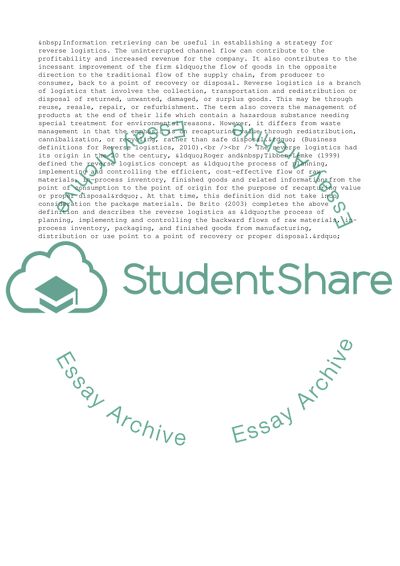Cite this document
(The Scope of Reverse Logistics Case Study Example | Topics and Well Written Essays - 2000 words, n.d.)
The Scope of Reverse Logistics Case Study Example | Topics and Well Written Essays - 2000 words. Retrieved from https://studentshare.org/management/1736991-summary-essay
The Scope of Reverse Logistics Case Study Example | Topics and Well Written Essays - 2000 words. Retrieved from https://studentshare.org/management/1736991-summary-essay
(The Scope of Reverse Logistics Case Study Example | Topics and Well Written Essays - 2000 Words)
The Scope of Reverse Logistics Case Study Example | Topics and Well Written Essays - 2000 Words. https://studentshare.org/management/1736991-summary-essay.
The Scope of Reverse Logistics Case Study Example | Topics and Well Written Essays - 2000 Words. https://studentshare.org/management/1736991-summary-essay.
“The Scope of Reverse Logistics Case Study Example | Topics and Well Written Essays - 2000 Words”. https://studentshare.org/management/1736991-summary-essay.


